Tagged With ‘mint’
Tom Daxon
Laconia
2 July, 2018
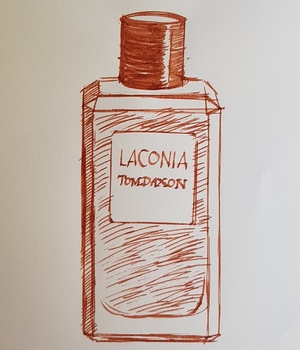 The Greek region of Laconia includes some of the most historic and spectacular parts of the Peloponnese, including the city of Sparta (the regional capital), the Mani peninsula and, on its eastern edge, the extraordinary presque-île of Monemvasia. Seen from the mainland, this huge rock – over 100 metres high, 300 metres wide and a kilometre long – towers over the sea that encloses it, surrounded by precipitous cliffs on every side. Connected to the shore by a narrow causeway, it makes a formidable natural fortress, and in the middle ages an important city grew up on its summit, connected to a small walled town on the narrow shelf at its base.
The Greek region of Laconia includes some of the most historic and spectacular parts of the Peloponnese, including the city of Sparta (the regional capital), the Mani peninsula and, on its eastern edge, the extraordinary presque-île of Monemvasia. Seen from the mainland, this huge rock – over 100 metres high, 300 metres wide and a kilometre long – towers over the sea that encloses it, surrounded by precipitous cliffs on every side. Connected to the shore by a narrow causeway, it makes a formidable natural fortress, and in the middle ages an important city grew up on its summit, connected to a small walled town on the narrow shelf at its base.
Lacking water and reliant on man-made cisterns cut into the rock, the city was gradually abandoned and today lies in romantic ruins, overgrown with scrub and difficult to explore. But the little town has been gradually restored, and now forms a car-free tourist haven. It was while staying at a luxury hotel here that British perfumer Tom Daxon found the inspiration for his latest scent, in the form of lemonade made with ice, local mint and honey and lemons grown on the hotel’s own estate. He’s named it after the region, which itself gave us the word ‘laconic’, apparently because Spartans were famously sparing with words.
Like me, Daxon is a fan of colognes, especially for the summer months, but he also feels that his customers want something that lasts longer than a few minutes on their skin. Citrus scents, refreshing though they may be, are notoriously short-lived, so the question was how to extend his new fragrance in an interesting way. His solution includes quite a long list of zingy and green ingredients, starting with lemon, yellow mandarin, orange and bergamot, followed by violet leaf, spearmint and clary sage, as well as ginger, cubeb, pink pepper and cardamom, all underpinned by vetiver and long-lasting synthetic musks.
The result is an attractive, fresh-smelling perfume with good staying power, though personally I’m willing to forego longevity in a cologne in favour of that all-important if all too short-lived blast of uplifting freshness – a laconic cologne, if you will. But when you’re paying £155 for 100ml, I can see the argument in favour of depth and development. I also admire the design of Daxon’s chunky, faceted bottles and smart monochrome packaging, which adds to the feeling of weight and lasting quality.
Etat Libre d’Orange
You Or Someone Like You
25 August, 2017
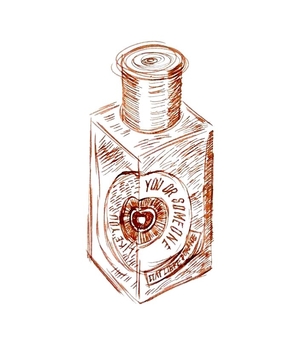 Victor Hugo, Tom of Finland, Tilda Swinton and the Marquis de Sade may not, on the face of it, have a great deal in common, but they have all inspired perfumes from the French niche-fragrance brand Etat Libre d’Orange.
Victor Hugo, Tom of Finland, Tilda Swinton and the Marquis de Sade may not, on the face of it, have a great deal in common, but they have all inspired perfumes from the French niche-fragrance brand Etat Libre d’Orange.
You Or Someone Like You is a collaboration with American perfume critic Chandler Burr, inspired by (and named after) his first novel, a comedy of manners set in Los Angeles, which I’d highly recommend. Though Burr points out that his perfume is not intended as an ‘olfactory landscape painting’, the heroine of his book is a keen gardener, and the scent he’s created with perfumer Caroline Sabas is as fresh as a spring morning in Beverly Hills.
Zingy citrus, rose, sharp grass and delicious hit of spearmint make for an addictively refreshing summer cologne – so addictive, in fact, that my bottle is already half empty.
Heeley
Menthe Fraîche
31 March, 2017
The mouth-watering smell of mint might be one of the most refreshing scents in the natural world, but it’s a bugger to use in perfumery, for the simple fact that toothpaste manufacturers got there first. Mint has been the most popular flavour for toothpaste since the early 20th century, so it’s a brave perfumer who decides to make it the main ingredient in a scent.
Enter the Yorkshire-born, Paris-based scentorialist James Heeley, who in 2004 released Menthe Fraîche, a bold and rather brilliant fragrance that puts mint firmly on centre stage – and got away with it without making it smell like mouthwash.
Menthe Fraîche smells fantastically minty by dint of a clever combination of natural and synthetic ingredients that reinforce and support each other in a way that simply spraying mint-oil on yourself never would. James Heeley notes that ‘Menthe Fraîche was a collaboration with a laboratory in Grasse, inspired by the smell of Corscian mint underfoot. It includes bergamot, a lot of cedarwood, fir balsam and white musk. It’s fresh without being overpoweringly minty.’ It includes both spearmint and the colder-smelling peppermint, as well as hints of green tea.
Though sadly it doesn’t last very long on the skin, Menthe Fraîche does keep going longer than some reviewers have claimed; I can still smell it a couple of hours after spraying it on, but then it’s a pleasure to reapply. And it is, after all, a cologne, something you’d use to freshen up on a hot summer’s day, rather than the kind of heavyweight perfume you might long for on a cold winter evening.
Created in collaboration with the professional perfumer David Maruitte, it also has a raft of synthetics, detailed by Chandler Burr in a typically excellent article for the New York Times, which you can read here. In a variation on the theme of art concealing art, Menthe Fraîche smells so wonderfully fresh and natural precisely because of the synthetic molecules in its make-up, not despite them – and that for me is one of the wonders of professional perfumery.
Frédéric Malle
Géranium pour Monsieur
28 November, 2016
 The world is full of fresh smells, but only a few of them are widely used in perfumery – mainly the sharp but fruity smells of citrus, which give eau-de-colognes their uplifting zing. The scents of mint or pine-needles are equally fresh and invigorating, yet few people want to smell of either, for the simple reason that mint is so strongly associated with toothpaste, and pine with household cleaning products. It’s a brave perfumer who attempts to use either of them in a fragrance, but Géranium pour Monsieur is a brilliant demonstration of how it can be done.
The world is full of fresh smells, but only a few of them are widely used in perfumery – mainly the sharp but fruity smells of citrus, which give eau-de-colognes their uplifting zing. The scents of mint or pine-needles are equally fresh and invigorating, yet few people want to smell of either, for the simple reason that mint is so strongly associated with toothpaste, and pine with household cleaning products. It’s a brave perfumer who attempts to use either of them in a fragrance, but Géranium pour Monsieur is a brilliant demonstration of how it can be done.
Created by Dominique Ropion for Frédéric Malle in 2009, this is a wonderful alternative to classic colognes, and it also offers something that colognes don’t have: a freshness that lasts not just for a few minutes or an hour or so, but almost all day long. Ropion has cleverly extended the refreshing scent of mint by mixing it with geranium (or rather pelargonium) oil, which has a minty side to it but lasts much longer than mint alone, and a spicy side that is emphasised here with the addition of aniseed, clove oil and cinnamon.
Like all the perfumes that Malle has commissioned for his Editions de Parfums range, this is a rich, complex scent, and its freshness is underlaid with smooth but luxurious ingredients like sandalwood, long-lasting synthetic white musks, and smaller amounts of incense and resinous benzoin. I think it’s a masterpiece, and a fine addition to the wardrobe of any well-dressed man.
Guerlain
Derby
21 August, 2015
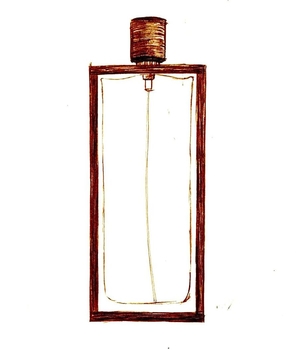 What a great perfume this is. Rich and complex yet totally wearable, Derby smells of old-fashioned luxury and style. It’s the kind of perfume that should have been name-checked in The Great Gatsby (surely the worst-written major novel of the 20th century), and yet it was first launched as recently as 1985, when electropop ruled the airwaves and shoulder-pads the size of aircraft carriers filled the pages of the fashion magazines.
What a great perfume this is. Rich and complex yet totally wearable, Derby smells of old-fashioned luxury and style. It’s the kind of perfume that should have been name-checked in The Great Gatsby (surely the worst-written major novel of the 20th century), and yet it was first launched as recently as 1985, when electropop ruled the airwaves and shoulder-pads the size of aircraft carriers filled the pages of the fashion magazines.
It was created by Jean-Paul Guerlain, the last member of the family to run the brand and a great perfumer in his own right: his other triumphs include Habit Rouge, Chamade and the fantastic Vétiver. Derby smells like crushed aromatic herbs when you first spray it on: rosemary and lavender with a hint of mint, but mixed with more exotic things like patchouli and sandalwood. Mace and pepper add a tiny touch of spice, while oakmoss, leather and vetiver give it extra depth and staying-power. After a while it smells more leathery than anything else, though still with herbs and spices mixed in – the scent of a Greek mountainside in summer.
For a long time Derby was quite hard to track down, which added to its mystique, but in 2005 Guerlain relaunched it as part of its Parisiens collection, at which point is was probably (though of course perfume companies never tell you these things) slightly ‘tweaked’ to change some of its ingredients (such as oakmoss) to comply with EU legislation. In 2011 it was repackaged in what I think is a rather cheap-looking balsawood frame, and its price went up as well: today it’s one of Guerlain’s most expensive fragrances, which I think is a shame, as it deserves to be widely worn.
Hermès
Le Jardin de Monsieur Li
4 March, 2015
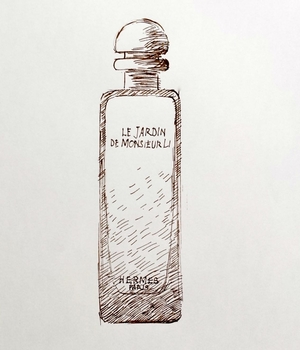 The latest addition to the ‘Jardin’ range of perfumes from Hermès takes China as its inspiration, though apparently the original intention was to develop a fragrance inspired by English gardens. Sadly it seems that Jean-Claude Ellena, the company’s starry in-house perfumer, found the idea too conventional and boring, responding to the suggestion with words to the effect of ‘who wants to smell another rose garden?’
The latest addition to the ‘Jardin’ range of perfumes from Hermès takes China as its inspiration, though apparently the original intention was to develop a fragrance inspired by English gardens. Sadly it seems that Jean-Claude Ellena, the company’s starry in-house perfumer, found the idea too conventional and boring, responding to the suggestion with words to the effect of ‘who wants to smell another rose garden?’
If that’s true I think it’s a shame, since English gardens are some of the most varied and imaginative in the world, and I’d have loved to get the chance to show Ellena the all-green garden at Rousham, say, or the vast yew terraces of Powis Castle. Then again, perhaps he simply fancied travelling somewhere more exotic than could be reached within the limits of a day-trip on the Eurostar.
Either way, Chinese gardens, with their long and literary history, offer rich material for a creative perfumer, and it can’t hurt that China is a vast and expanding market for luxury brands, as attested by Hermès’ sumptuous new store in Shanghai.
Though the Monsieur Li of the title is imaginary, Ellena’s visits to Chinese gardens were made with the Chinese painter Li Xin, who moved from Beijing to Paris in 2002 and whose work forms a perfect counterpoint to Ellena’s: subtly sophisticated abstract ‘landscapes’ in washes of ink on creased rice-paper, one of which decorates the box for Le Jardin de Monsieur Li.
‘So,’ Hermès tell us, ‘Jean-Claude Ellena travelled to China. He visited gardens. Many gardens. Each one was unique but they all spoke the same language of fluidity and precision. So he created his own garden. An imaginary place inspired by the symbolic power of all the gardens he had seen. An earthly paradise in miniature, on a human scale. A retreat in which to converse with oneself and with others, and to honour one’s ancestors…
‘A vantage point from which to observe the soul and creation, where different kinds of beauty never compete but rather complement and enhance one another. A place that can only be fully experienced if one takes a partial tour of it every day, humbly and eagerly, with an eye that is ever fresh and a heart that is ever pure.’
If you’re feeling slightly queasy by now join the club, though this is par for the course for perfume PR. It probably sounds just fine in French, but high-flown purple prose translates terribly into Anglo-Saxon English, and I do wish they wouldn’t bother.
All the same it’s interesting to read what Ellena says about the smells that inspired him when he started work on Le Jardin de Monsieur Li at his house in Cabris near Grasse. ‘I remembered the scent of the pools, of the jasmine, the wet stones, the plum trees, the kumquats and the giant bamboo. It was all there, even the carp in their pond, taking the time to live to a hundred. The Sichuan pepper bushes were as thorny as roses and the leaves gave off a lemony scent.’
And can you smell this in the perfume itself? The answer is yes and no. I can certainly smell lemon and something like kumquats – a sweet, slightly strawberryish smell, though far less sweet than the delirious strawberry-kumquat scent of Black XS for Men from Paco Rabanne. I get a hint of jasmine, but it’s subtle and restrained enough for Le Jardin de Monsieur Li to be equally intriguing on a woman or a man.
It smells quite green and fresh to me as well, which I guess suggests the giant bamboo; Hermès describe the perfume’s ‘key notes’ as ‘Jean-Claude Ellena’s personal evocation of Vegetal Jasmine, Mint, Kumquat and Sap’.
What I like about this perfume most might drive other people mad, which is that I can’t quite put my finger on what it smells of, but to me that’s intriguing enough to make me want to keep wearing it. And though it’s subtle and restrained, Le Jardin de Monsieur Li has a staying power that some of Ellena’s other perfumes lack – worth noting when a 100ml bottle costs £84. Still, it’s a lovely scent and a beautiful bottle too, in heavy glass suffused by a pale shade of imperial yellow that delicately deepens from top to bottom.
Guerlain
Guerlain Homme l’eau Boisée
18 January, 2014
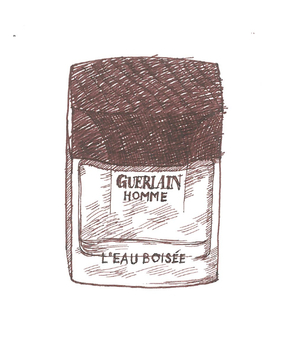 Few perfume companies have such a great heritage (and so many perfumes) as Guerlain, which is presumably why the luxury behemoth LVMH bought it in 1994. Founded in Paris in 1828 by Pierre-François Guerlain, it reached its apotheosis in the late nineteenth and early twentieth century under Pierre-François’ grandson Aimé (who concocted the wonderful Jicky in 1898) and Aimé’s nephew, Jacques Guerlain.
Few perfume companies have such a great heritage (and so many perfumes) as Guerlain, which is presumably why the luxury behemoth LVMH bought it in 1994. Founded in Paris in 1828 by Pierre-François Guerlain, it reached its apotheosis in the late nineteenth and early twentieth century under Pierre-François’ grandson Aimé (who concocted the wonderful Jicky in 1898) and Aimé’s nephew, Jacques Guerlain.
One of the greatest perfumers of all time, Jacques created a whole series of legendary fragrances between 1906 and 1925, whose names are almost as alluring as the scents themselves: Après l’Ondée in 1906, L’Heure Bleue in 1912, Mitsouko in 1919, Shalimar in 1925, and Vol de Nuit in 1933.
Jacques’ grandson, Jean-Paul Guerlain, continued the family tradition, creating many superb fragrances of his own, for women and for men, including three of my own personal favourites – Vétiver (1959), Habit Rouge (1965) and Héritage (1992). But his reign ended sadly: after the Guerlains sold out to LVMH, Jean-Paul became just one of Guerlain’s hired hands, and in 2010 even his post-retirement role as a consultant was terminated after he made a casually racist remark on French television.
I’ll return to some of my own favourite Guerlain perfumes in future reviews, but I’ve recently been given, very generously, a bottle of Guerlain Homme L’eau Boisée, and as I rather like it I thought it would be good to feature something that was only released in 2012.
L’eau Boisée was created by Thierry Wasser, the Swiss-born perfumer who, before he took over from Jean-Paul Guerlain in 2008, worked for the multinational fragrance company Firmenich and was responsible for perfumes as diverse as Dior’s Addict, Diesel’s Fuel for Life and Kylie Minogue’s Darling.
Wasser’s original Guerlain Homme was released, to mixed reviews, the same year that he joined the company in-house. With a nice touch of wit, it’s based on the smell of a mojito, the Cuban cocktail whose ingredients include white rum, spearmint leaves and lime juice, but it’s been generally described as a fairly mass-market men’s fragrance – perfectly wearable, at least, but hardly up there with Habit Rouge or Jicky.
Since then, impelled by perfume retailers’ insatiable (and ultimately self-defeating) demands for novelty, Wasser has so far created three further versions of Guerlain Homme: Intense (2009), L’eau (2010) and L’eau Boisée. This last is a soft, woody fragrance, whose initial fresh scent of lime fades fairly quickly, to be followed by the warm scent of cedar wood and the pleasantly earthy smell of vetiver (Wasser uses a special vetiver from Tamil Nadu in southern India, apparently, rather than the more usual variety from Haiti or Réunion).
I can’t smell rum in L’eau Boisée, but to me it does have a faint but not unpleasant smell of celery, and a faintly sweaty (but again not unpleasant) scent that reminds me of a bottle of Penhaligon’s Hammam Bouquet that I used up years ago – must go and have a sniff to compare.
Would I rush out and buy a bottle? I’m not sure I would, as it’s hardly a groundbreaking scent; but as new perfumes go it’s both pleasant and rather refined, the kind of thing you could safely buy for an uncle or a friend. I’d be interested to know what you think.